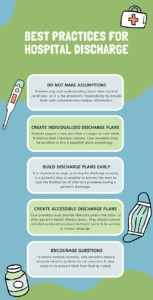Plantar Wart Triggers and How to Treat Them
Understanding Plantar Warts: Causes and Characteristics
These benign skin lesions form on the epidermis, the outermost layer of skin, and are caused by specific strains of the human papillomavirus (HPV).
What Makes Plantar Warts Unique?
Plantar warts are distinguishable by their grainy texture, hardened callus-like surface, and small black dots, which are actually clotted capillaries.
Plantar Warts vs. Corns: Key Differences
Though plantar warts may resemble corns, they differ in appearance, location, and cause. Corns typically form on the tops of toes or over joints, resulting from friction or pressure.
Symptoms of Plantar Warts
Plantar warts may not always cause discomfort, but they can become painful when they press against sensitive tissues or nerve endings. Larger warts may crack or split, leading to irritation, bleeding, or increased soreness. Pain is especially common when warts grow inward or appear in skin folds, such as between toes.
When to Seek Medical Attention
While many plantar warts resolve on their own, certain symptoms warrant professional evaluation:
-
Persistent bleeding or changes in the wart’s appearance
-
Difficulty walking due to pain
-
Warts that worsen despite treatment
-
Presence of warts in individuals with diabetes, as they are at higher risk for foot complications
Causes and Risk Factors
Plantar warts are caused by HPV, with strains 1, 2, 4, 60, and 63 being the most common culprits. The virus thrives in warm, damp environments, such as locker rooms, public showers, or pool areas, and enters the skin through tiny cuts or abrasions in the stratum corneum, the outermost layer of the epidermis.
How HPV Leads to Wart Formation
This process can take weeks or months to become visible. The virus can spread to nearby skin through scratching, picking, or direct contact, increasing the likelihood of additional warts.
Who Is at Risk?
-
Weakened immune system, which reduces the body’s ability to fight HPV
-
Frequent barefoot walking in communal wet areas
-
Excessive foot perspiration, creating a moist environment for the virus
Diagnosing Plantar Warts
Healthcare providers can often identify plantar warts through a visual examination, looking for telltale signs like black dots or a callused surface. In uncertain cases, a shave biopsy may be performed, where a small tissue sample is analyzed to confirm the diagnosis or rule out other conditions, such as molluscum contagiosum or squamous cell carcinoma.
Treatment Options for Plantar Warts
Many plantar warts disappear without intervention, but treatment may be necessary for larger, painful, or persistent warts. Treatment options range from at-home remedies to medical procedures, depending on the wart’s severity and the patient’s needs.
At-Home Treatments
Over-the-counter (OTC) products containing salicylic acid are widely used to treat plantar warts. Available forms include:
-
Liquid solutions applied with a dropper or swab
-
Adhesive pads that cover and treat the wart
-
Aerosol sprays that freeze the tissue
Tips for Effective At-Home Treatment
For best results, debride the wart between applications using a pumice stone or callus file to remove dead skin. Avoid aggressive debridement, as it can cause bleeding or infection. Always clean the skin, hands, and tools thoroughly after treatment.
The Duct Tape Method: Does It Work?
While popular, scientific evidence on its effectiveness is inconclusive, and it may not work for everyone.
Prescription Treatments
For warts resistant to OTC treatments (known as recalcitrant warts), prescription-strength salicylic acid or 5% 5-fluorouracil (5-FU) cream may be recommended. The 5-FU cream, applied twice daily, has shown an 87% success rate in clearing plantar warts, though it may cause mild redness or burning.
Medical Procedures
-
Surgical Excision: Physically removing the wart under local anesthesia These procedures are typically quick but may require follow-up care to prevent recurrence.
Preventing Plantar Warts
-
Wear flip-flops or water shoes in public showers, locker rooms, or pool area
-
Use moisture-wicking socks to reduce foot perspiration
Frequently Asked Questions
How Long Do Plantar Warts Last?
Plantar warts can resolve on their own within months or years, but treatment can speed up the process, especially for painful or spreading warts.
Are Plantar Warts Dangerous?
While generally harmless, plantar warts can cause discomfort and, in rare cases, complications, especially for individuals with diabetes or compromised immune systems.





